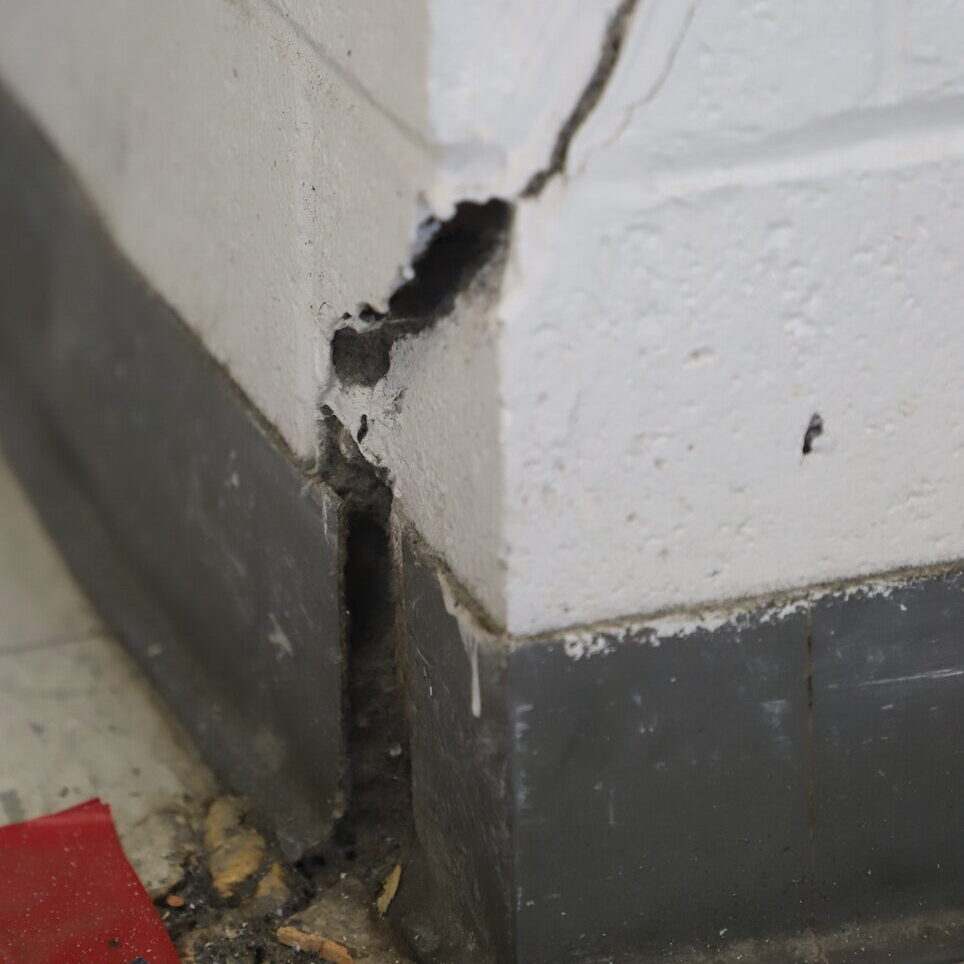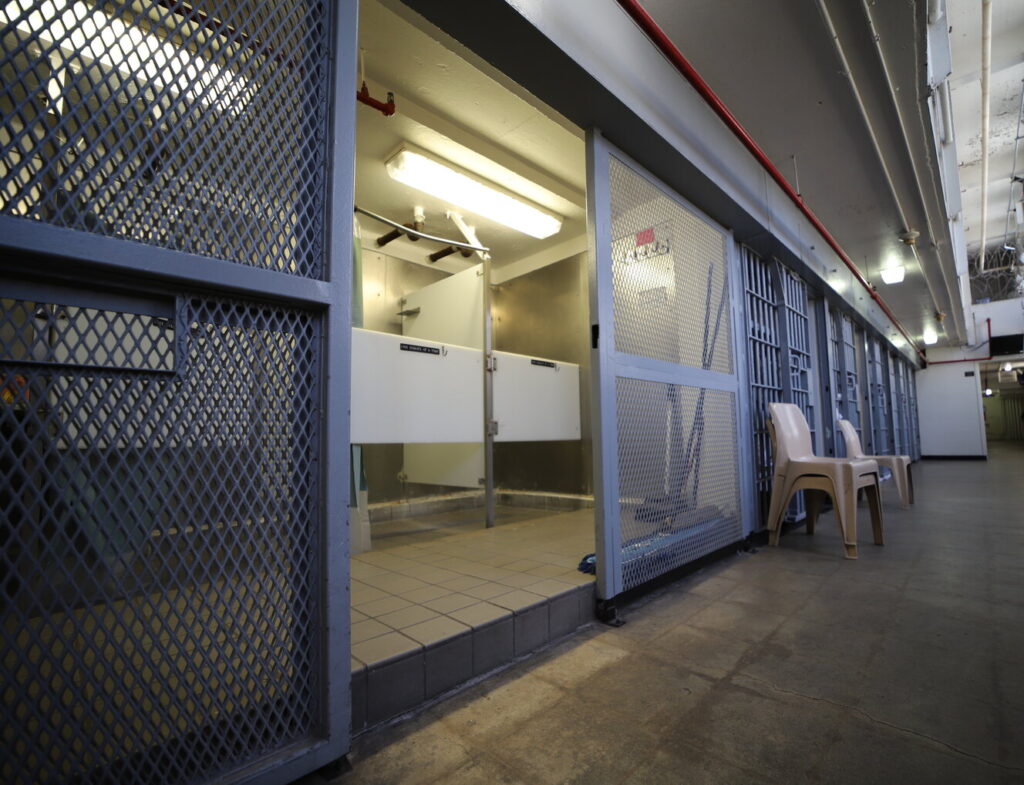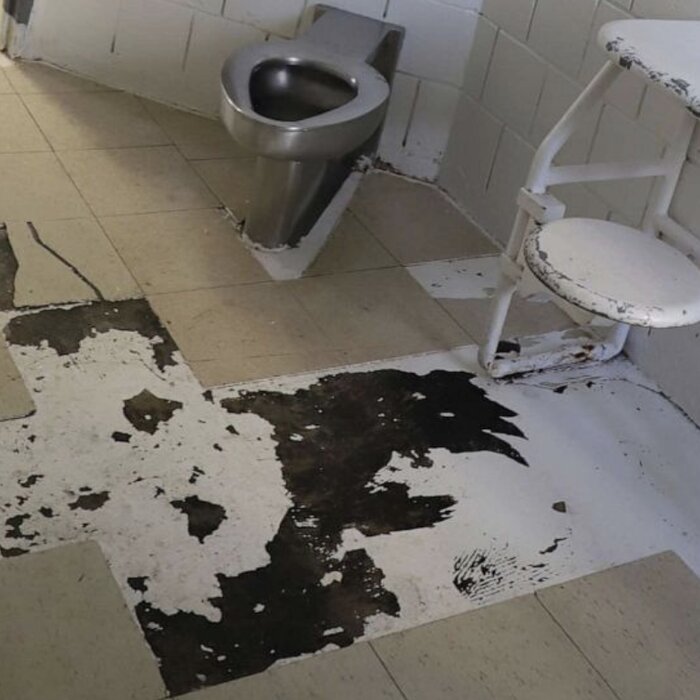A recent Department of Justice inspector general report says the 123 federal prisons in the United States need roughly $2 billion worth of “maintenance” and most are “aging and deteriorating.”
“We’re seeing crumbling prisons,” says DOJ Inspector General Michael Horowitz. “We’re seeing buildings that we go into that have actually holes in the ceilings in multiple places, leading to damages to kitchens, to doctor’s offices to gymnasiums. And they’re not being fixed.”
Below is a firsthand report from the front lines.
When I was sentenced to 20 years in 2014 and was shipped to my first federal Bureau of Prisons institution, the last thing I expected was a dilapidated, unsanitary facility where I am as much at risk from disease as violence. Yet, these are the conditions I’ve encountered in most American prisons to which I’ve been assigned.
The men I met at the D.C. jail who had previously done time in the feds warned me about the dangers of federal prison, such as the gangs and the resulting violence that can flare at any time. I was expecting that and was as prepared as much as anyone can be. But I imagined that a federal institution would at least be modern, structurally sound and safe from a sanitary standpoint.
Now, don’t get me wrong, I never entertained the illusion that I was going to anything close to a luxury resort. I knew I was going to a place with a lot of steel and concrete cinderblocks in a drab setting. But I didn’t expect to be placed in a facility where the roof would suddenly cave in and I’d be at risk of catching MRSA (a type of antibiotic-resistant infection) because of the unsanitary conditions.
And equally surprising is the fact that most of the structural and sanitation problems I’ve witnessed have been at medium-security institutions (FCIs). I’ll share a story to illustrate.
Cold and rainy…inside
In 2016, my security and custody points dropped from high to medium and, as a result, I was transferred from the Coleman penitentiary in Florida to Estill FCI in South Carolina. Its outward appearance appeared ok; it looked like a collection of tidy, low buildings. I was assigned to the C-B housing unit, which is shaped like a bird with its wings spread. Each building contains two housing units. Upon entering the C-B unit, the first thing I noticed were mop buckets positioned in several places to catch the water dripping from the pipes in the ceiling. And the areas closest to the showers were covered with black mold.
A few months later, the rainy season began. During a severe thunderstorm, I found out that the ceiling leaked like a sieve. It was as if it was raining on the inside! The orderlies scrambled to grab buckets to keep the rain from flooding the unit, but there weren’t enough. So, we threw blankets on the floor.

A moldy crack documented by the DOJ
There were other problems in the unit as well. The air conditioning rarely worked and during the summer months, it was blistering hot and humid.
I was in the C-B housing unit for about eight months before it was shut down, ostensibly because of staffing shortages. The people who lived there were reassigned to other units throughout the prison. Although there were rumors that repairs were being made to C-B, I never witnessed any work crews going in.
I was reassigned to the A-A unit and forced to live in a three-man cell. These are roughly the same size as a two-man cell, around 8 x 14 feet. The only difference is that there is an added bunk bed. It feels like being stuffed in a bathroom with two other people.
I soon discovered that A-A had the same problems as C-B. There were numerous leaks and the air conditioning didn’t work. Warm air blew out of the vents and many of the guys kept them covered because of the black dust that blew out (I believe this was black mold spores). Many of us believed this was why so many of us had breathing problems and respiratory infections.
During one particularly bad thunderstorm, a 2 x 3-foot piece of the ceiling fell down and water poured in. The ceiling was later crudely patched with a piece of drywall.
I wrote numerous grievances calling attention to the conditions of confinement, but if there was any response at all it was only temporary. It was as if the administration of the prison was content to let the place go to hell as long as the locks worked. Eventually, my complaints earned me a transfer.
A few years later, I ran into another prisoner who had been incarcerated at Estill FCI. He informed me that the prison was hit by a tornado and sustained massive damage, including a torn-off roof. The prison closed and everyone was transferred to different prisons. I couldn’t help but think that the fact that the prison was falling apart made it a predictable casualty.
Of mice and toilets
Another prison I found to be worn down and very unsanitary is Ray Brook FCI in New York. The prison is in a heavily forested area near the southern border with Canada. Before it was a prison, Ray Brook was part of the “village” built for the Winter Olympic Games in the 1980s. As we were pulling into the prison, I observed that the exterior of the building had a dingy, rundown appearance.
I was assigned to a six-man cell in the Niagara housing unit. I discovered that the old, rundown appearance wasn’t limited to the exterior. I was promptly informed that the housing unit had a serious mice infestation, and to be careful about keeping food in the lower lockers.
I didn’t stay on the compound that long because of a peculiar set of circumstances. After being at Ray Brook for only about two weeks, I was accosted by a few officers while I was eating lunch in the dining hall. They took me to the lieutenant’s office, told me I was under investigation and sent me to the Special Housing Unit (SHU). The lieutenant refused to tell me what I was being investigated for, and I didn’t learn until a week later that I was suspected of having a knife or trying to acquire a knife. I had no idea why.
In most SHUs, the lights are harshly bright in the corridors. But the Ray Brook SHU had a dreary, dungeon-like appearance, with dirty, cracked, concrete floors. In addition, the COs [police] who worked the SHU were unprofessional. They routinely used abusive and foul language and frequently threatened prisoners, even when we were respectful. It seemed as if they thought their mission was to agitate us. One SHU officer loved to play loud military music all morning. There were other COs who forced handcuffed inmates to the ground for no apparent reason as they walked them to the recreation cage or showers.

Showers documented in the DOJ report
It was even rumored that some COs placed small pieces of glass or rocks in certain prisoners’ food trays. This is what I believe occurred when I cracked my back tooth when I ate some potato salad on Christmas day.
Although my housing unit had heat, it didn’t work in the SHU. Wind blew in through the cracks by the window, and the cells were very cold. After we complained to the lieutenant, he ordered the COs to pass out extra blankets. But after a couple of weeks, these blankets were taken away. We were told the heat was working, but we didn’t feel it much. It was so cold my fingers were blue.
The prisoners in the SHU at Ray Brook were essentially at the mercy (or lack of mercy) of the COs. The lights in our cells were controlled by the officers; we couldn’t turn them on or off. We couldn’t even flush our own toilets; this too had to be done by the COs. And that leads me to the most disgusting example of infrastructure failure that I have experienced in the federal prison system.
I only found out that we didn’t have the ability to flush our own toilet after I informed my cellmate that I had to use it. I noticed a towel draped over the toilet bowl and asked him about it. My cellmate responded by saying, “It’s cool. I had it flushed. Just make sure you put the towel back over the bowl when you’re finished.” I wasn’t sure what he meant by “I had it flushed.” But I went ahead and used it. I reached back to flush, but nothing happened. I asked my cellie, “Is the water off?” That’s when he informed me that the button to flush the toilet is located outside of our cell and that we must wait for the CO to walk by and ask him to flush the toilet. I was shocked! But that wasn’t all.
Later that evening, I kneeled by the toilet to urinate (I do this to keep the urine from splashing on me or the surface). The CO had just walked by and the prisoner in the cell next to ours asked him for a flush. As I urinated, I saw feces and brown water bubble up in the toilet. I couldn’t believe what was happening. I was urinating, not defecating! I asked my cellie what was going on and he explained that it was a plumbing problem. When one toilet is flushed, the contents are forced into the neighboring commode, which shares the same pipes. My cellmate (who had been at Ray Brook for over three years) said that the cells in the SHU have operated this way ever since he arrived. And that’s the reason he always kept a towel or T-shirt over the toilet.
As I spent more time in the SHU, I learned that a few COs would flush your toilet when they walked by your cell (which was not very frequent) without being asked. Others would ignore you if they were in a bad mood. No wonder infectious diseases are rampant in prison. It’s a culture of neglect and depravity.
After being in the SHU at Ray Brook for around a month, I was informed I was no longer under investigation, and was being transferred to a more “appropriate” institution. A little over two months later, I was shipped out. Foolishly, I felt optimistic that the next place could be better.
But when I got to my new housing unit, what did I discover? The ceiling was leaking all over.
***
Postscript: After spending almost 10 years in federal prisons, I have a theory about why they are not being properly maintained. I believe the main culprit is the misappropriation of taxpayer dollars. Or, to put it more bluntly: stealing. The annual budget for the federal Bureau of Prisons includes funds for the maintenance of the facilities. Where is it going?
One of the lieutenants at my current prison offered a clue: Wardens receive a yearly bonus that is determined in part by how much they can come in under budget. So, there’s a financial incentive to cut corners. If the American people don’t start paying attention to how these federal institutions are run, then these conditions will keep getting worse.




